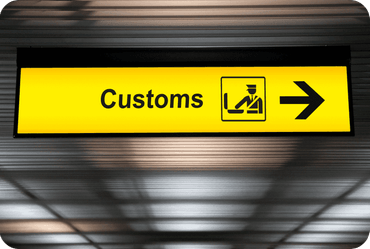
What are the Best Shipping Consolidation Strategies for Cross-Border Shopping?
Cross-border shopping offers access to a wide variety of products and better pricing, but high international shipping costs can make purchases less cost-effective. Shipping consolidation—combining multiple packages into a single shipment—helps reduce expenses and optimize delivery. Here’s how to effectively use consolidation strategies for international shipping.
1. Understanding Shipping Consolidation
Shipping consolidation services allow shoppers to:
- Combine multiple purchases from different retailers into one package before international shipping.
- Reduce shipping costs per item by minimizing package volume and weight.
- Streamline customs clearance with fewer shipments.
Many parcel forwarding companies offer consolidation, including Shipito, MyUS, Stackry, and Forward2Me, allowing buyers to shop from retailers that don’t ship internationally.
2. Choosing the Right Shipping Consolidation Service
Not all consolidation services offer the same benefits. Consider:
a. Storage Duration and Fees
Most parcel forwarding companies offer free storage for 7 to 60 days to allow customers time to consolidate shipments. Ensure the service provides enough storage time without high fees.
b. Repacking and Volume Reduction
Some services repack items into smaller boxes to reduce volumetric weight, lowering shipping costs. Look for services that remove unnecessary packaging without compromising product safety.
c. Supported Shipping Carriers
A good consolidation service should offer multiple carrier options, including DHL, FedEx, UPS, and economy postal services, allowing flexibility in pricing and delivery speed.
d. Consolidation Fees and Service Charges
Compare fees before choosing a service. Some charge flat fees per package, while others offer free consolidation as part of premium memberships.
3. Optimizing Shipping Costs Through Consolidation
a. Group Orders Strategically
- Consolidate multiple items from the same country to reduce cross-border shipments.
- Time your purchases to arrive within the consolidation service’s free storage period.
- Avoid consolidating heavy and fragile items together to prevent damage.
b. Minimize Dimensional Weight Charges
- Ask the service to remove excess packaging to reduce size-based shipping fees.
- Select flexible packaging options like padded envelopes instead of rigid boxes when possible.
c. Compare Shipping Rates for Different Package Sizes
- Use shipping calculators from parcel forwarding services to check cost differences before consolidation.
- Larger consolidated packages may cross duty-free thresholds, increasing import fees, so balance package size accordingly.
4. Handling Customs and Duties When Consolidating Shipments
a. Know Your Country’s Duty-Free Limit
Each country has an import tax threshold that determines whether customs duties apply. Some examples:
- U.S.: Duty-free for packages under $800
- EU: VAT applies on all imports, duties apply for goods over €150
- Australia: Duty-free under AUD 1,000
b. Choose DDP (Delivered Duty Paid) Shipping If Available
Some shipping providers allow prepayment of customs fees (DDP shipping), preventing unexpected charges at delivery.
c. Ensure Proper Customs Documentation
- Provide correct declared values to avoid delays.
- Check HS (Harmonized System) codes for product classification to determine duty rates.
5. Avoiding Common Shipping Consolidation Mistakes
a. Over-Consolidating Large Orders
- Large shipments may attract higher customs fees. In some cases, splitting into smaller packages can reduce overall costs.
- Some countries have strict import limits per package, which can delay clearance.
b. Ignoring Restricted or Prohibited Items
- Some items, like batteries, liquids, and food products, may be restricted or require special shipping methods.
- Always check carrier and country restrictions before consolidating.
c. Not Comparing Different Shipping Options
- Some forwarding services default to expensive carriers. Always compare different express, economy, and postal service options before shipping.
Conclusion
Shipping consolidation is one of the best ways to reduce cross-border shopping costs. By choosing the right forwarding service, timing purchases strategically, minimizing dimensional weight, and understanding customs regulations, international shoppers can save money while ensuring efficient deliveries.
- 1. Understanding Shipping Consolidation
- 2. Choosing the Right Shipping Consolidation Servicea. Storage Duration and Feesb. Repacking and Volume Reductionc. Supported Shipping Carriersd. Consolidation Fees and Service Charges
- 3. Optimizing Shipping Costs Through Consolidationa. Group Orders Strategicallyb. Minimize Dimensional Weight Chargesc. Compare Shipping Rates for Different Package Sizes
- 4. Handling Customs and Duties When Consolidating Shipmentsa. Know Your Country’s Duty-Free Limitb. Choose DDP (Delivered Duty Paid) Shipping If Availablec. Ensure Proper Customs Documentation
- 5. Avoiding Common Shipping Consolidation Mistakesa. Over-Consolidating Large Ordersb. Ignoring Restricted or Prohibited Itemsc. Not Comparing Different Shipping Options
- 6. Conclusion
Related Articles

Black Friday Shopping & Global Shipping Made Easy

Cost-Effective International Shipping Methods for Buyers
